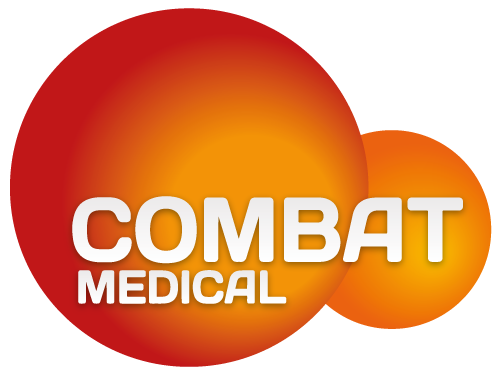Non-Muscle-Invasive Bladder Cancer (NMIBC) is one of the most common forms of cancer worldwide, with around 2.5 times more men being affected than women. Age is another risk factor, with 56% of new cases being diagnosed in those aged 75 and over.
However, treatments are constantly evolving to improve outcomes and quality of life for patients. Among the most promising advancements is Therapeutuic Hyperthermia, which involves the use of elevated temperatures to target cancer cells. When combined with chemotherapy, hyperthermia delivers a potent, synergistic effect, amplifying the efficacy of the treatment.
The Combat BRS (Bladder Recirculation System) is the first system specifically engineered to deliver thermotherapy (HIVEC®) within precise parameters, optimising chemo-hyperthermia while ensuring patient safety and comfort, and without requiring additional resources.
How Does Therapeutic Hyerthermia Work?
Therapeutic hyperthermia involves heating cancer-affected tissues to a specific temperature range, typically between 41°C and 44°C. Unlike normal cells, cancer cells are highly sensitive to heat, making this method particularly effective.
The optimal temperature range is critical – it’s low enough to avoid harming healthy cells but high enough to induce stress and damage in cancer cells. The result is enhanced sensitivity of cancer cells to chemotherapy agents, reducing the likelihood of recurrence.
Hyperthermia disrupts cancer cell functions through multiple mechanisms:
1. Impeding Tumor Angiogenesis
Tumour-induced angiogenesis is necessary for tumour growth and survival. Hyperthermia inhibits this process, preventing the formation of new blood vessels and effectively cutting off the tumour’s nutrient supply.
2. Enhancing Chemotherapy Cytotoxicity
Studies reveal that chemotherapy agents like Mitomycin C exhibit a 10-fold increase in cytotoxicity at 43°C. This temperature-specific advantage boosts treatment efficacy without additional toxicity for the patient.
3. Disrupting Cancer Cell Membranes
Elevated temperatures compromise the integrity of cancer cell membranes by disrupting the lipid-protein bilayer. This increases membrane permeability, making it easier for chemotherapy drugs to penetrate and attack cancer cells.
4. Boosting Intracellular Drug Accumulation
Heat-induced protein denaturation in cancer cells facilitates greater accumulation of chemotherapy agents inside the cell. Once inside, these drugs cause DNA strand breaks, halting replication and inducing cell death.
5. Synergistic Effects with Mitomycin C
Mitomycin C is particularly suited for hyperthermia. It remains stable at elevated temperatures, with its activity 1.4 times higher at 43°C.
This combination of stability and increased activity allows for a more targeted and efficient treatment. Hyperthermia enhances Mitomycin C’s ability to damage cancer cell DNA, amplifying its effects without increasing side effects.
6. Immune System Activation through Hyperthermia
Hyperthermia not only enhances chemotherapy but also stimulates the immune system. It activates natural killer cells (NKCs), which recognise and attack cancer cells marked with heat-shock proteins.
This process promotes apoptosis, encouraging cancer cells to self-destruct. By strengthening the body’s natural defenses, hyperthermia offers a dual benefit: direct cancer cell destruction and immune system activation.
Clinical Benefits of Hyperthermia in NMIBC
Patients undergoing hyperthermia-enhanced chemotherapy experience improved outcomes. The synergistic effect allows for higher cytotoxicity at lower doses, minimising side effects. Furthermore, hyperthermia reduces cancer recurrence rates compared to standard chemotherapy at room temperature.
The Bladder Recirculation System (BRS) by Combat Medical
Our Bladder Recirculation System (BRS) offers a breakthrough in delivering Hyperthermic IntraVesical Chemotherapy (HIVEC®). Unlike traditional methods, the BRS ensures precise control over temperature, maximising efficacy while prioritising patient safety and comfort.
The system is engineered to maintain consistent hyperthermic conditions, eliminating the need for additional resources and ensuring a seamless experience for both patients and healthcare providers.
Advantages of Our BRS System
Our BRS offers several unique benefits:
- Resource Efficiency: It doesn’t require extensive modifications to existing healthcare setups.
- Precision: Maintains optimal temperatures, ensuring consistent therapeutic effects.
- Patient Comfort: Designed with safety and comfort in mind, improving overall patient experience.
The Future of Cancer Treatment
Therapeutic Hyperthermia’s potential extends beyond NMIBC and offers a potent, synergistic approach to cancer care. With Combat’s BRS system, patients can access safer, more effective treatments that significantly improve outcomes and bladder preservation.
“Chemohyperthermia using HIVEC results in high recurrence-free survival and a 2-year progression-free survival rate of 98% with a bladder preservation rate of almost 80%. Comparing our data, HIVEC shows better oncological results together with better tolerability and safety making HIVEC a good alternative for patients who refuse radical cystectomy or who are ineligible for radical cystectomy.” Source:
HIVEC as an alternative option in non-muscle-invasive bladder cancer: Experiences from a high-volume center:

